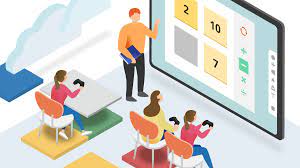In the new and challenging context of the digital society of the twenty-first century, the labor market increasingly demands flexible, creative professionals with a broad background in skills and competencies (van Laar et al. 2018). Therefore, many universities are constantly making teaching changes for the employment development of students, including Game-Based Learning and Gamification. The teaching mode of Game-Based Learning is that teachers use games as a platform to communicate with students according to students’ innate love for games and their curiosity for new interactive media. The Gamification mode is a small game interspersed in the class, which is often used to warm up the field and break the ice and adjust the atmosphere.
I think this mode will make the process of information transmission more vivid and students will be more active in learning. First of all, the fun of games does help stimulate students’ learning motivation; Secondly, games provide students with an approximate real “experiential” learning environment, allowing students to “experience” rather than just “know”, and let them discover, analyze and solve problems by themselves. And games can provide a learning environment for students to put forward hypotheses and test them; And the success and failure in the game also let students experience a rich emotional experience.
reference :
van Laar, E., van Deursen, A. J., Van Dijk, J. A., & de Haan, J. (2017). The relation between 21st-century skills and digital skills: A systematic literature review. Computers in Human Behavior, 72, 577–588.

Leave a Reply
You must be logged in to post a comment.